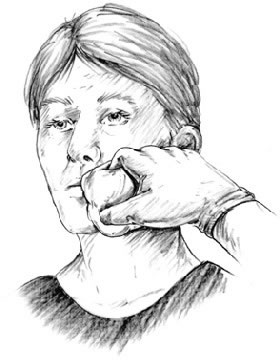Photos

FIRST AID Advice - Bleeding Wound of the Mouth
- Apply direct pressure to the entire wound with a sterile gauze dressing or a clean cloth. Once the bleeding has stopped, cover with an adhesive bandage or gauze.
Source: Self Care Decisions, LLC
Used with Permission from Schmitt Pediatric Guidelines LLC.